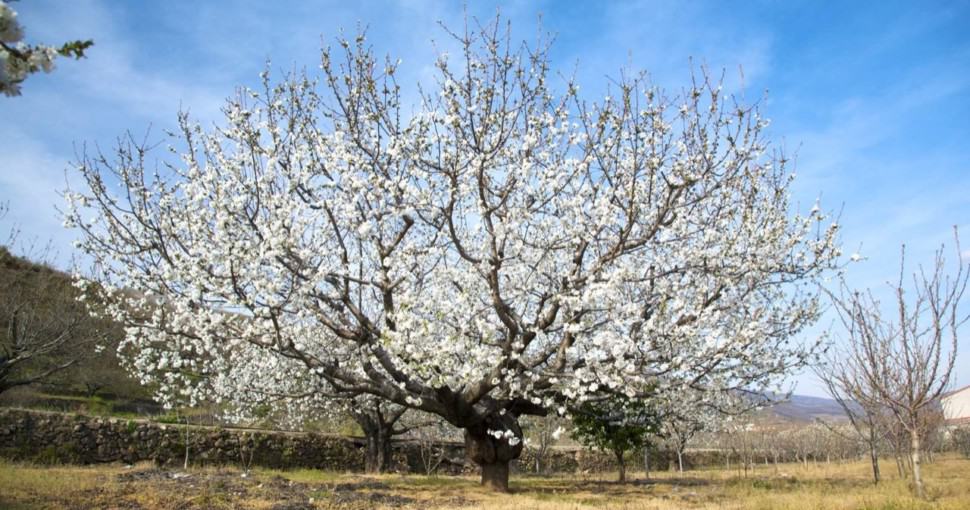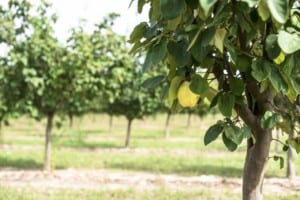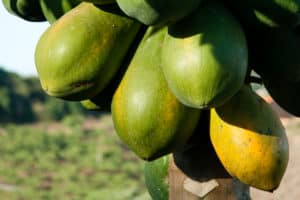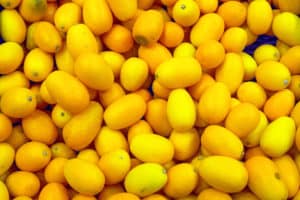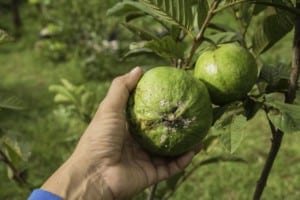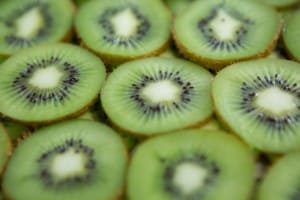Do you wish to grow Almond Trees in your garden or commercially but are confused about which trees you should grow? Don’t fret. Read on to discover the bloom time, pollinating compatibility, and harvest time of the most popularly grown almond tree varieties to make an informed decision!
Contents
- 1. California Paper Shell Almond
- 2. Livingston Almond
- 3. Mission Almond
- 4. Mono Almond
- 5. Padre Almond
- 6. Ruby Almond
- 7. Thompson Almond
- 8. Ripon Almond
- 9. Planada Almond
- 10. Carmel Almond
- 11. Ne Plus Ultra Almond
- 12. Nonpareil Almond
- 13. Monterey Almond
- 14. Garden Prince Almond
- 15. Winters Almond
- 16. Butte Almond
- 17. Fritz Almond
- 18. Sonora Almond
- 19. Avalon Almond
- 20. Durango Almond
- 21. Aldrich Almond
- 22. Price Almond
- 23. Wood Colony Almond
- 24. Shalimar Almond
- 25. Merced Almond
- 26. Peerless Almond
- 27. Waris Almond
- 28. Primorskij Almond
- 29. Profuse Almond
- 30. Tardy Nonpareil Almond
- 31. Eureka Almond
- 32. Kapareil Almond
- 33. Vesta Almond
- 34. Jenette Almond
- 35. Norman Almond
- 36. Granada Almond
- 37. Harvey Almond
- 38. Robson Almond
- 39. LeGrand Almond
- 40. Sauret#2 Almond
- 41. Carrion Almond
- 42. Capitola Almond
- 43. Independence Almond
- 44. Mira Almond
- 45. Vela Almond
- 46. Capella Almond
- 47. Maxima Almond
- 48. Makako Almond
Almond trees are deciduous, hard trees with spreading crowns decorated with striking, fragrant, 5-petaled, and white to light pink blossoms. The monoecious blooms give way to drupes or kernels that grow in hard hulls and shells. These trees feature slightly serrate, lance-shaped, green foliage.
Even though the US houses more than 30 varieties of the Almond cultivars, only ten of them, including the ever-popular Nonpareil, make up around 70% of the country’s almond production. Also, most almond tree cultivars thrive in the US hardiness zones 5 through 9. If you happen to live on the lower end of the almond tree’s hardiness range, choose a variety that blooms later to prevent the loss of flowers to frost. Late-blooming Almond Trees include Mission, Ruby, Padre, Thompson, and Ripon.
You will also need to consider the size of the tree you plant to plant in your garden, especially if you have a small garden. The mature size of most almond trees can range from 12 feet to 20 feet high and wide. Carmel is among the smaller almond tree varieties and doesn’t spread so much. Meanwhile, Monterey is certainly short, but it spreads as much as other varieties.
Moreover, you will need to consider the pollinating capabilities of your chosen almond trees because not all varieties are self-fertile or compatible pollinators for each other. So, if you buy more than one variety of Almond Trees to plant in your garden, make sure that the two varieties are compatible with each other. Their blooming periods need to overlap for them to pollinate each other.
Here are the most popular almond tree varieties that you can grow in your garden:
1. California Paper Shell Almond
California Paper Shell Almond is known to produce medium to large-sized, flattish nuts with paper-like shells. This tree originated in California in the 1880s. It produces consistently prolific crops of medium-sized kernels. This tree is relatively easy to prune and train. You can pollinate it with Carmel, Price, Ne Plus Ultra, and other California Paper Shell Almond Trees as well.
2. Livingston Almond
Livingston Almond produces medium-sized, well-sealed kernels with a paper-thin shell. This tree blooms about five days after Nonpareil with varieties such as Padre and Butte. It also matures about ten days after Nonpareil, much earlier than Padre and Butte. Livingston Almond is a medium to large tree with an upright habitat and prolific yearly yield.
3. Mission Almond
Mission Almond is a late-blooming, prolific tree. It produces short, plump kernels with exceptionally hard shells. This tree requires cross-pollination as it is not self-fertile. You can cross-pollinate it with other Almond varieties, such as Price, Carmel, All-In-One, and Nonpareil. It thrives in full sun and clay, loamy, and sandy soils.
4. Mono Almond
Mono Almond is a prolific tree and a relatively good pollinator. It produces almonds with hard shells and sweet-tasting kernels. Mono Almond is a disease-hardy tree and a vigorous grower. This tree grows exceptionally well and yields healthy, flavorful crops in sun-kissed locations in a wide variety of free-draining soils.
5. Padre Almond
Similar to the Butte variety, Padre Almond produces late blooms and crops; it blooms five days after Nonpareil and matures for harvest about 23 days after Nonpareil. Padre Almond is an upright tree that produces almonds with hard, nicely sealed shells and medium to small kernels. This is a prolific tree that thrives in sunlit areas and well-drained soils.
6. Ruby Almond
Ruby Almond blooms about eight days after Nonpareil. It also offers a late harvest of crops that ripen about 31 days after Nonpareil almonds. It yields medium to small-sized, plump kernels that grow in nicely sealed, semi-hard shells. Ruby Almond is a productive, moderately vigorous tree with an upright growth habitat.
7. Thompson Almond
Thompson Almond Trees bloom around five to seven days after Nonpareil Almond Trees. These trees can cross-pollinate with numerous Almond Tree cultivars, including Butte, Fritz, Padre, and Ruby Almond Trees. Thompson Almond is ready for harvesting around 15 to 20 days after Nonpareil Almond Trees. It’s a bit difficult to remove the almonds from this tree. Thompson Almond is highly susceptible to non-infectious bud failure, peach twig borer, and navel orange worm.
8. Ripon Almond
Ripon Almond blooms quite late into the season. It flowers more than eight days after Nonpareil Almond. For successful cross-pollination, you can plant your Ripon near Fritz and Ruby Almond. Unlike many Almond Trees, Ripon Almond isn’t compatible with Ne Plus Ultra. It’s typically ready for harvest around 15 to 20 days after Nonpareil Almond Trees.
9. Planada Almond
Planada Almond trees bloom around 8eightdays after the popular Nonpareil Almond Trees. Since they bloom so late, they are also not prepared for harvesting early. You can harvest these trees around 40 to 60 days after the harvest time of Nonpareil Almond Trees. For prolific crops, plant your Planada Almond in a sunlit area in free-draining soil.
10. Carmel Almond
Carmel Almond is an exceptional pollinizer for Nonpareil Almond Trees. It produces high-quality kernels that are sealed properly in hard shells. Young Carmel Almond Trees produce heavy crops. Their harvest time is two to three weeks after the harvest time of Nonpareil Trees. Carmel Almond Trees are not self-fertile and need prolific pollinators to yield abundant crops.
11. Ne Plus Ultra Almond
Ne Plus Ultra Almond is a French variety loved commercially because of its fast-growing habitat and large, light brown almonds with flat, long, sweet kernels. You can pair it with Nonpareil for exceptional growth and prolific crops. Don’t cross-pollinate it with Norman, Price, Ripon, or Merced. Ne Plus Ultra Almond is a large Almond Tree with spreading, willow tree-like branches.
12. Nonpareil Almond
Nonpareil Almond is a widely popular Almond Tree in the US. It produces almonds with soft, thin shells and large, smooth kernels. This Almond Tree variety does no self-pollinate, but you can plant it with other Almond varieties for pollination. However, it isn’t compatible with Profuse, Tardy, Nonpareil, and Jefferies. This variety thrives in sunlit areas in free-draining soils.
13. Monterey Almond
Monterey Almond is a small yet vigorous grower with a spreading crown. This Almond Tree produces heavy crops of elongated Almond kernels with a soft, nicely sealed shell. These trees produce fruits that tend to double. Monterey Almond is a great pollinator for Nonpareil and vice versa. It blooms two days after the popular Nonpareil and requires harvesting at least three to four weeks after its counterpart.
14. Garden Prince Almond
Garden Prince Almond is an attractive, naturally dwarf Almond Tree that produces a profusion of striking pink blooms in early spring. This is a perfectly hardy variety that thrives in warm, dry summers. Garden Prince Almond requires hand pollination for prolific crops. This tree thrives in full sun and free-draining soils and needs protection from frost.
15. Winters Almond
Winters Almond is a new variety of Almond Trees introduced by the University of California. It blooms alongside Carmel and Nonpareil but is ready for harvest about 14 days after the latter. It produces high-quality, medium-sized, elongated almonds with a soft, thin, moderately sealed shell. Winters Almond is an upright, vigorous tree that yields consistently prolific crops and thrives in full sun.
16. Butte Almond
Butte Almond is considered to be the most prolific Almond Tree. It’s a moderately vigorous tree with a spreading crown. This tree produces late blooms that show up four days after Nonpareil blooms. It also has a late harvest time; it’s ready for harvest 20 days after Nonpareil. You can plant Butte Almond with other Almond Tree varieties, such as Padre. It produces medium or small-sized, plump kernels with a semi-hard, well-sealed shell.
17. Fritz Almond
Fritz Almond blooms around the same time as Nonpareil and produces consistently prolific crops. It harvests around 40 days after Nonpareil. This tree produces almonds with semi-hard shells and medium-small, ovate kernels. Fritz Almond features an upright, moderately spreading crown. This tree is an excellent pollinator for Nonpareil Almond Trees.
18. Sonora Almond
Sonora Almond Tree blooms three days before the popular Nonpareil. However, it is less frost-sensitive than other early blooming Almond Trees. Its harvest time is around seven days after Nonpareil’s harvest time. Sonora Almond produces medium to large-sized, elongated, light brown-hued kernels enclosed in a paper-thin, often poorly-sealed shell. This tree has a slightly spreading crown.
19. Avalon Almond
Avalon Almond Tree is somewhat similar to the Nonpareil variety. However, it is ready for harvesting around eight days after the typical Nonpareil Almond Tree. It also blooms approximately three days before Nonpareil Almond. The almonds produced by Avalon Almond Trees are nicely sealed in their shells, preventing them from insect damage. These trees are excellent pollinators for Nonpareil and Carmel Almond Trees.
20. Durango Almond
Durango Almond is a prolific Almond Tree with an upright, vigorous, and somewhat spreading form. Its prolonged bloom season starts about two days before the bloom season of Nonpareil Almond Trees. The white-hued blooms are exceptional at attracting bees. Durango Almond is ready for harvesting around ten days after Nonpareil Almond Trees.
21. Aldrich Almond
Aldrich Almond produces medium-sized, plump almonds sealed in medium-hard shells. This tree is an excellent pollinator for other Almond Trees. It blooms with Nonpareil and harvests about fifteen days after its counterpart. Aldrich Almond has a growth habitat that resembles Mission Almond Trees. It’s an upright, vigorous, large tree.
22. Price Almond
Price Almond produces almonds that are quite similar in flavor to the popular Nonpareils. These almonds have a dark, hard shell that protects the small, light brown, grooved nut inside. Price Almond is an excellent pollinator for most Almond varieties except for the Ne Plus Ultra Trees. Plant it in full sun and well-drained clay, loam, or sandy soils.
23. Wood Colony Almond
Wood Colony Almond is a moderately compact tree suitable for close planting. Its blooms flourish around the same time as Carmel and Nonpareil blooms. This tree matures for harvesting about eleven days after Nonpareil. Wood Colony Almond is a consistently prolific tree that produces medium-sized, elongated kernels with semi-soft, nicely sealed shells. This tree is smaller than Caramel Almond Trees but features a similar spreading crown.
24. Shalimar Almond
Shalimar Almond is a Kashmiri Almond Tree variety that is grafted with the local peach. It produces prolific crops of flavorful, creamy brown to slightly whitish, elongated almonds encapsulated in semi-hard shells. This tree also produces beautiful white blooms with pink centers and anthers. For prolific growth, plant your Shalimar Almond Tree in a sunlit location in free-draining soil.
25. Merced Almond
Merced Almond Trees produce semi-early blooms and mid-season crops of paper-shelled, bold, light brown, flattened almonds. This upright tree produces white, 5-petaled, cup-shaped blossoms that give way to sweet-tasting almonds. For prolific growth, plant your tree with the appropriate pollinators in full sun and free-draining soils.
26. Peerless Almond
Peerless Almond Trees bloom earlier than the popular Nonpareil Trees. Their blooms flourish around the same time as Ne Plus Ultra blooms. Peerless Almond produces medium-sized kernels in attractive hard shells. This is a medium-sized, upright tree that produces prolific crops when planted with Nonpareil and Ne Plus. Plant your Peerless Almond in full sun and free-draining soils.
27. Waris Almond
Waris Almond Tree is an upright specimen with moderately vigorous growth. This mid-blooming tree produces medium-sized, bold, and brown to creamy white, soft-shelled almonds with a sharply pointed apex. Waris Almond Trees need to grow in full sun and loamy, clay, or sandy soils to ensure prolific yearly crops.
28. Primorskij Almond
Primorskij Almond Trees are mid to late-season bloomers. They are upright trees with moderately vigorous growth. These trees produce medium to large, slightly flattened, bold, brown-hued kernels that are enclosed in hard shells. This tree is ready for harvesting in the late season. It thrives in a sunlit area in a wide variety of free-draining soils.
29. Profuse Almond
Profuse Almond Trees are incredibly non-compatible pollinators for the popular Nonpareil Almond Trees. If you want to grow Profuse Almond Trees, plant them in a sunlit location in free-draining soils made from loam, clay, or sand.
30. Tardy Nonpareil Almond
Tardy Nonpareil Almond is a cultivar of the Nonpareil Almond Tree. Its bloom date is seven to ten days after the traditional Nonpareil Trees bloom date. This slightly delayed bloom protects its flowers from frost. However, it can lead to a decline in the tree’s crop production. For prolific growth, plant your tree in full sun and free-draining soils.
31. Eureka Almond
Eureka Almond Trees are highly non-compatible pollinators for Solano Almond Trees. These trees can grow well in sunlit locations in free-draining soils made from loam, clay, and sand.
32. Kapareil Almond
Kapareil Almond Tree is a distinctive small-kernel Almond Tree variety released by the California Agricultural Experiment Station. It consistently produces prolific crops of small-sized almond kernels enclosed in exceptionally hard shells. It also yields cup-shaped, 5-petaled, white blooms with pink centers. This tree is an excellent pollinator for Nonpareil Almond Trees.
33. Vesta Almond
Vesta Almond is a productive Almond Tree developed by the US Department of Agriculture. It produces large almonds with soft shells that are easy to crack by hand. However, the shells are sealed properly to protect the kernel from worm damage. Vesta Almond Trees grows vigorously, branch well, and fruit prolifically. This tree pollinates with Nonpareil and features leaves that are more resistant to red spider mites than those of its counterpart.
34. Jenette Almond
Jenette Almond Trees are non-compatible pollinators for Ne Plus Ultra Almond Trees. These trees are the only Almond Tree cultivars in the US that have predominantly dark-skinned, wrinkly kernels. These nuts are enclosed in thin, breakable shells. They are non-self-fertile trees that thrive in a sun-kissed location and free-draining soils.
35. Norman Almond
Norman Almond is a mid to late-blooming Almond Tree. Typically, this Almond variety does not suffer from low-infectious bud failure. Norman Almond produces almonds that are quite easy to remove from the tree. For prolific crop growth via cross-pollination, plant this tree with a Butte Almond Tree in full sun and free-draining soils.
36. Granada Almond
Granada Almond Trees are incompatible pollinators for Thompson Almond Trees. They tend to grow well in a sunlit location in free-draining clay, loam, and sandy soils.
37. Harvey Almond
Harvey Almond Trees bloom approximately the same day or two days after Nonpareil Almond Trees. For cross-pollination, plant your Harvey Almond near a Fritz Almond Tree. However, don’t plant it near a Thompson Almond as that will result in unsuccessful pollination. Harvey Almond Trees are ready for harvesting seven to ten days after Nonpareil Almond Trees. They are moderately susceptible to non-infectious bud failure, peach twig borer, and navel orange worm.
38. Robson Almond
Robson Almond Trees are non-compatible with Thompson Almond Trees. These trees tend to grow well in a sunlit location in free-draining clay, loam, and sandy soils.
39. LeGrand Almond
LeGrand Almond Trees bloom around three to four days after Nonpareil Trees. They are ready for harvest about 25 to 30 days after Nonpareil Almond Trees. However, they might double harvest at an earlier stage. These trees are susceptible to non-infectious bud failure, navel orange worm, and peach twig borer. It is quite difficult to remove the nuts from this Almond Tree.
40. Sauret#2 Almond
Sauret#2 Almond Tree blooms in mid to late season. It is highly compatible with Aldrich Almond for cross-pollination. However, it is quite incompatible with Thompson Almond. It matures for successful harvesting 25 to 30 days after Nonpareil matures. Its almonds can be removed from the tree with moderate ease. Plant this tree in a sunlit area for prolific growth.
41. Carrion Almond
Carrion Almond Trees bloom around three to four days after Nonpareil Trees. These trees are incompatible pollinators for Carmel Almond Trees. However, they will cross-pollinate wonderfully with Butte, Fritz, and Padre Almond Trees. Carrion Almond is ready for harvest around 15 to 20 days after Nonpareil Almond Trees. This tree is moderately susceptible to existing non-infectious bud failure.
42. Capitola Almond
Capitola Almond produces a crop similar to Nonpareil Almond. It yields consistently high-quality, small, slightly dark, sweet-tasting kernels enclosed in semi-soft shells. Capitola Almond is a vigorous, hardy, and productive tree with large, spreading branches, lanceolate green leaves, and abundant light pink blooms with yellow anthers. It thrives in a sunlit location and free-draining soil.
43. Independence Almond
Independence Almond is a self-fertile Almond Tree variety with an upright, moderately spreading crown. This prolific bloomer produces high-quality, large almonds with a light color and excellent flavor. This tree thrives and pollinates well with Nonpareil and harvests two to three days before its counterpart. You can plant it in full sun and free-draining clay, loam, and sandy soils.
44. Mira Almond
Mira Almond Tree is a self-fertile, medium to large, vigorous, and productive tree with an open crown. It produces prolific crops of high-quality, sweet-tasting kernels enclosed in nicely sealed, semi-hard shells. Just like Nonpareil Almond Trees, Mira Almond has an early harvest time. The almonds of Mira Almond are easily removed from the hulls.
45. Vela Almond
Vela Almond is a self-fertile Almond Tree with a medium to late harvest time. It produces prolific crops of high-quality, sweet-tasting, large to medium-sized kernels encapsulated in soft shells. This prolific, vigorous tree has an upright, spreading crown. It is known to produce Almonds that release easily from their hulls. Since it’s a self-fertile tree, it does not require other Almond Trees to produce its crops.
46. Capella Almond
Capella Almond is a self-fertile, prolific Almond Tree with a slightly open, moderately branched crown. It produces high-quality, sweet kernels that are enclosed in nicely sealed, hard shells. This medium-sized tree is quite easy to harvest despite its prolific crops. For excellent growth, plant your Capella Almond in a sunlit location in free-draining soil.
47. Maxima Almond
Maxima Almond is a cross-pollinating Almond Tree with a spreading, moderately branched crown. This tree blooms prolifically around four days after Nonpareil Almond. It produces prolific crops of large, sweet-tasting, cordate, skin-hued, bright kernels enclosed in semi-hard shells. Maxima Almond is an excellent pollinator for Nonpareil, Carmel, Wood Colony, Mira, and Monterey Almond Trees.
48. Makako Almond
Makako Almond Tree is an extra-late flowering Almond Tree cultivar. This tree blooms around 20 to 21 days after Nonpareil Almond Trees. The best part about Makako Almond is that it can produce prolific crops under passive self-pollination. This is a vigorous tree with a balanced habitat. It produces large kernels that are enclosed in hard shells.

